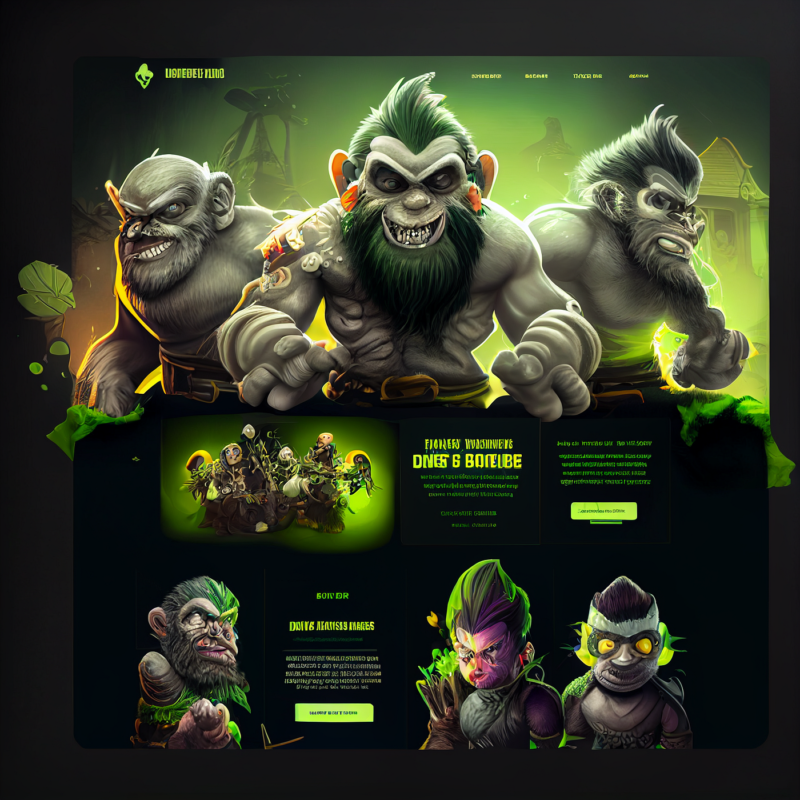Hello, fellow trendsetters! Welcome to Pycodehub, your visionary partner in web development. Ever wondered what websites will look like in 2050? The web development singularity is upon us, and it’s time to prepare for this exciting future. In this blog post, we’ll take you on a journey through essential steps to imagine, design, and develop cutting-edge websites that define the digital landscape of 2050. Get ready to become a trailblazer in the web development industry!
1. Embrace Emerging Technologies
To begin our journey into the future, embrace emerging technologies like Artificial Intelligence (AI), Virtual Reality (VR), Augmented Reality (AR), and Quantum Computing. These innovations will redefine user experiences and functionality on websites. Understanding their potential now will position you as a leader in the era of advanced web development.
In-depth Detail: Emerging technologies such as AI will empower websites to predict user preferences and deliver personalized experiences in real-time. VR and AR will transform web interactions by creating immersive environments for virtual meetings, interactive product demonstrations, and virtual tours. Quantum computing will revolutionize data processing capabilities, enabling faster and more efficient algorithms for complex computations on websites.

2. Master User Experience (UX) Design
The cornerstone of future websites lies in exceptional User Experience (UX) design. Dive deep into UX principles such as user research, intuitive interface design, and seamless navigation. Creating prototypes and wireframes will help visualize how users interact with websites in 2050.
In-depth Detail: UX design in 2050 will focus on creating intuitive interfaces that adapt to user preferences and behaviors. User research methodologies, including ethnographic studies and usability testing, will inform design decisions to ensure websites are user-centric. Prototyping tools will enable designers to iterate quickly and refine user interactions based on feedback.

3. Develop Adaptive and Responsive Designs
In 2050, devices will vary widely in size and capability. Design websites that adapt effortlessly to different screen sizes and resolutions, ensuring a consistent user experience across smartphones, tablets, wearables, and large displays.
In-depth Detail: Adaptive design will utilize fluid grids and flexible images to dynamically adjust website layouts based on the device’s screen size and orientation. Responsive design techniques, such as media queries and viewport settings, will optimize content visibility and usability across various devices. Advanced CSS and JavaScript frameworks will automate responsive behaviors, enhancing user accessibility and engagement.

4. Prioritize Accessibility
Accessibility will be non-negotiable in 2050. Design websites with inclusive features that cater to diverse user needs, including those with disabilities. Incorporate accessible design practices and compliance with accessibility standards to ensure equitable access for all users.
In-depth Detail: Implementing accessibility features like alternative text for images, keyboard navigation support, and high contrast color schemes will enhance usability for users with visual or motor impairments. Conducting accessibility audits and user testing sessions with individuals from diverse backgrounds will validate website accessibility and compliance with global standards.

5. Leverage AI for Personalization
Harness AI algorithms to deliver personalized user experiences tailored to individual preferences. Utilize machine learning models to analyze user behavior, predict preferences, and customize content, enhancing user engagement and satisfaction.
In-depth Detail: AI-driven personalization will involve collecting and analyzing user data, such as browsing history and demographic information, to generate personalized recommendations and content suggestions. Natural Language Processing (NLP) techniques will enable chatbots and virtual assistants to provide personalized customer support and interactive experiences. A/B testing and analytics tools will measure the effectiveness of AI-driven personalization strategies and optimize user interactions.

6. Enhance Security and Privacy
Security will be paramount in 2050. Implement robust security measures such as encryption, biometric authentication, and secure data storage to protect user information from cyber threats. Conduct regular security audits to ensure websites maintain high standards of data protection.
In-depth Detail: Cybersecurity strategies will include implementing HTTPS protocols, SSL certificates, and secure APIs to encrypt data transmissions and prevent unauthorized access. Biometric authentication methods, such as fingerprint or facial recognition, will enhance user identity verification and access control. Compliance with international privacy regulations, like GDPR and CCPA, will safeguard user privacy rights and ensure ethical data handling practices.

7. Explore Quantum Computing
Explore the potential of quantum computing to revolutionize web development. Quantum algorithms can solve complex problems exponentially faster, opening new possibilities for data processing, cryptography, and computational efficiency in website development.
In-depth Detail: Quantum computing applications in web development will focus on optimizing data analysis, machine learning algorithms, and cryptographic protocols. Quantum-inspired optimization techniques will enhance website performance and scalability, enabling faster data retrieval and real-time decision-making processes. Collaborating with quantum computing experts and leveraging cloud-based quantum computing platforms will facilitate experimentation and innovation in web development projects.

8. Create Immersive Experiences with VR and AR
Design immersive virtual and augmented reality experiences that transcend traditional web interactions. From virtual tours to interactive product demos, leverage VR and AR technologies to engage users and provide unique, memorable experiences.
In-depth Detail: Virtual reality environments will enable users to explore 3D virtual spaces, interact with virtual objects, and participate in immersive storytelling experiences. Augmented reality applications will overlay digital information and interactive elements onto the physical world, enhancing product visualization and spatial navigation. Integrating motion tracking sensors and spatial audio technologies will immerse users in dynamic virtual environments and enhance sensory engagement.

9. Innovate with Voice User Interfaces (VUIs)
Voice User Interfaces (VUIs) will dominate in 2050. Develop websites that support voice commands, enabling users to navigate, search, and interact using natural language. Optimize VUIs for accuracy, responsiveness, and contextual understanding.
In-depth Detail: Designing conversational interfaces will involve integrating speech recognition technologies, natural language understanding (NLU) algorithms, and voice synthesis capabilities into web applications. Building custom voice commands and personalized voice assistants will enhance user productivity and accessibility. Conducting usability tests and voice interface optimizations will refine VUI interactions and ensure seamless user experiences across diverse languages and accents.

10. Focus on Sustainable Development
Incorporate sustainable practices into web development processes. Adopt eco-friendly hosting solutions, optimize energy consumption, and minimize digital carbon footprints. Design websites with sustainable coding practices and advocate for environmental responsibility in digital technologies.
In-depth Detail: Implementing green web hosting solutions, such as renewable energy-powered data centers and energy-efficient server infrastructure, will reduce carbon emissions and environmental impact. Employing sustainable coding practices, such as minimizing code complexity and optimizing resource usage, will improve website performance and energy efficiency. Promoting eco-friendly design principles, like using recycled materials and promoting digital sustainability awareness, will contribute to a greener future for web development.

Conclusion
Congratulations! You’ve embarked on a journey to envision and create websites that will define the digital landscape of 2050. By mastering these essential steps—embracing emerging technologies, prioritizing UX design, and integrating advanced features—you’ll pave the way for groundbreaking innovations in web development. Stay connected with Pycodehub for more insights, trends, and tools to shape the future of web development.
Together, let’s lead the charge towards the web development singularity and transform ideas into reality. Join us on this visionary journey and make your mark as a trendsetter in the web development industry!







